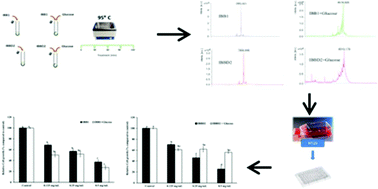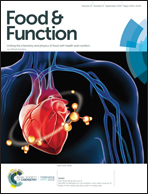Glycation affects differently the main soybean Bowman–Birk isoinhibitors, IBB1 and IBBD2, altering their antiproliferative properties against HT29 colon cancer cells
Abstract
Naturally-occurring serine protease inhibitors of the Bowman–Birk family, particularly abundant in legume seeds, exert their potential chemopreventive and/or therapeutic properties via protease inhibition. Processing of legume seeds, including soybeans, has been proposed as a major cause for their loss of bioactivity due to glycation. In order to assess how glycation affected the protease inhibitory activities of major soybean Bowman–Birk isoinhibitors (BBI) and their antiproliferative properties, IBB1 and IBBD2 were purified and subjected to glycation under controlled conditions using glucose at high temperature. Both soybean isoinhibitors showed remarkable heat stability. In the presence of glucose, IBBD2 lost most of its trypsin inhibitory activity while IBB1 maintains similar trypsin and chymotrypsin inhibitory activities as in the absence of sugar. Glycation patterns of both BBI proteins were assessed by MALDI-TOF spectrometry. Our results show that the glycation process affects IBBD2, losing partially its antiproliferative activity against HT29 colon cancer cells, while glycated-IBB1 was unaffected.



 Please wait while we load your content...
Please wait while we load your content...